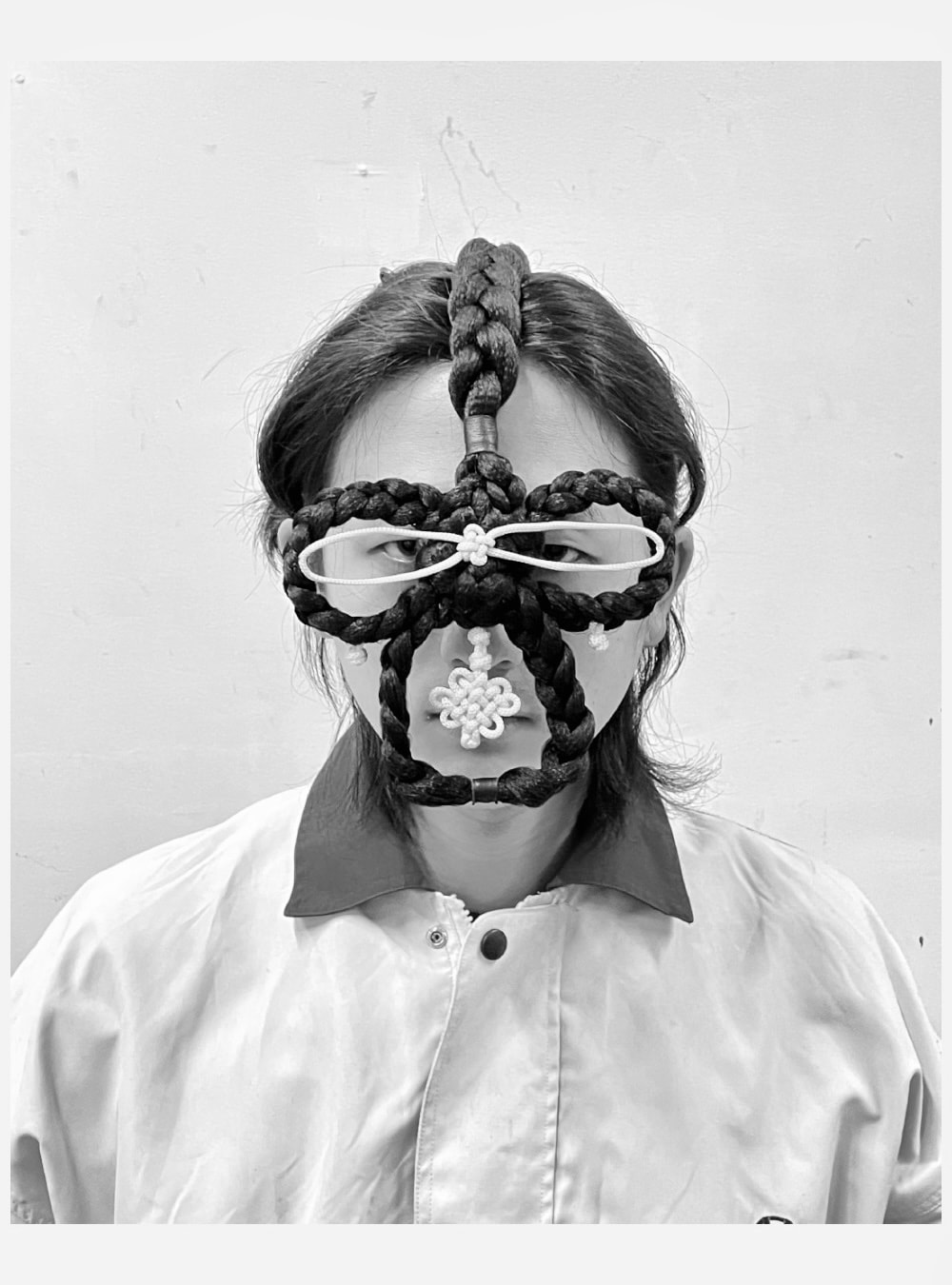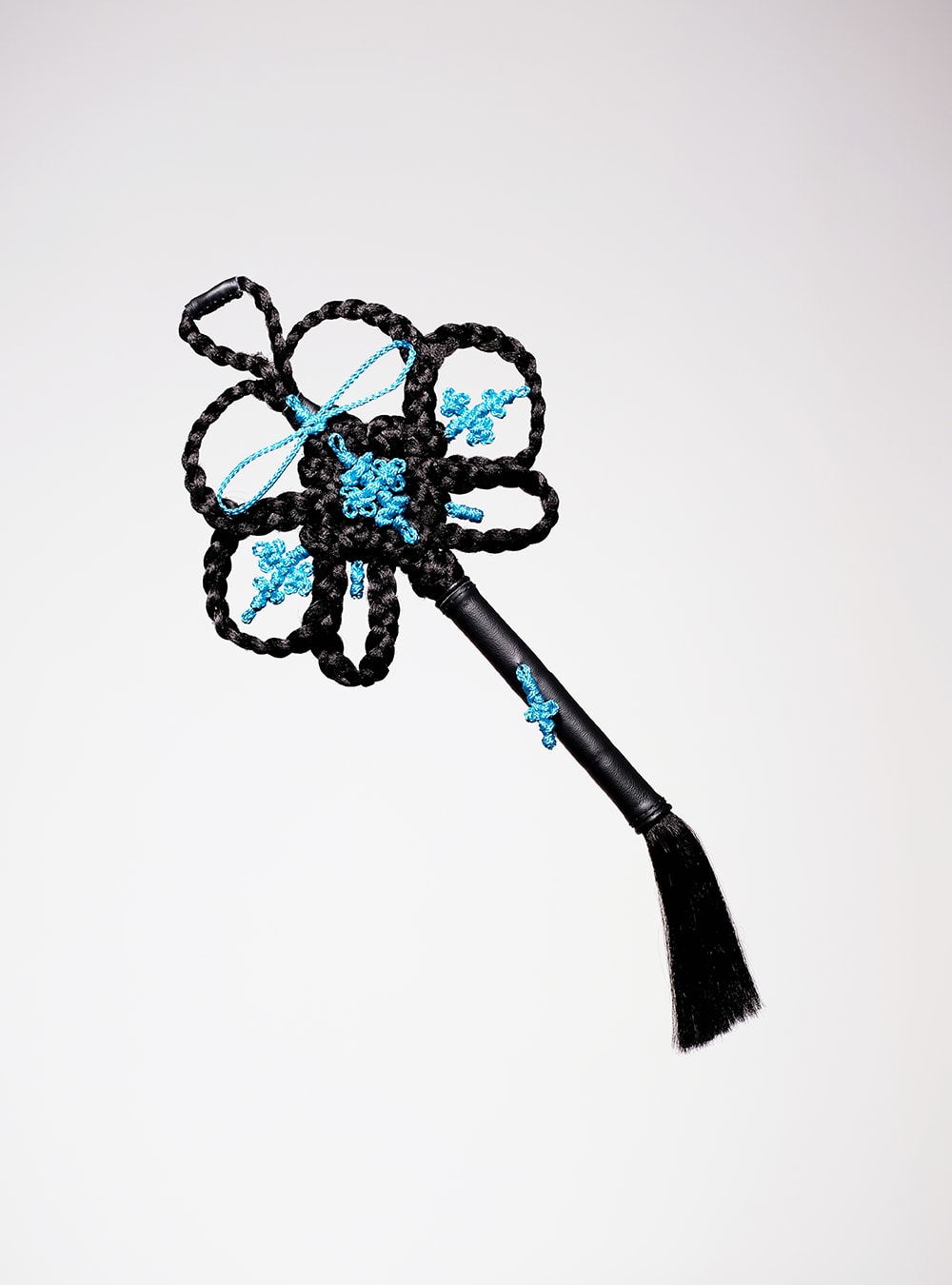- Objective: Hair
- Objective: Hair
- Objective: Hair
ART + CULTURE: Dae Uk Kim taps into feelings of shame around gender and self-expression to make hirsute objects that spark joy, both in process and in final form
Artworks: Dae Uk Kim
Interview: Katharina Lina
As a result of having grown up in a conservative environment with traditional, stern gender expectations, Dae Uk Kim resorted to the art of sculpture and object-making as an outlet for pent-up desires. With every judgemental or bewildered look, Kim, who is based between The Netherlands and South Korea, learned early on that playing with dolls and hair was considered inappropriate, something he should give up. Unlearning these lessons about gender and masculinity, Kim, now an artist, taps into these sources of shame and repression and turns around the narrative by taking the very materials and themes that were once used to stifle him, and making objects that liberate him by cultivating beauty, joy and humour instead.
How would you describe the aesthetic of your hair art to someone who hasn’t seen your work? It can also be viewed as a drag aesthetic. It is the aesthetic that comes from the behaviour of a man who grew up in a conservative culture to express his desires outside the rigid gender boundaries. What would it look like if an object, non-human, was put in drag?
You’ve previously mentioned turning shame into pride with your work. Where does the shame come from? In my conservative upbringing, it was shameful to express my desire to have really long hair and play with it or play with doll’s hair as a man. Through my objects, I express society’s implicit gender boundaries and make a timid struggle against society’s gaze.
What does hair signify for you? Freedom from the rigid gender boundary. In the past, there was a rule in Korea that men should not grow their hair. In fact, when a man had long hair, the police would inspect the man’s hair and cut it. Now, that rule has disappeared, but still implicitly in society, I think that hair and hairstyles are one of the factors that differentiate men and women. And actually, for me hair is not a medium for making artworks. Using hair is an excuse to have fun and play with hair and to satisfy my desire to comb, tie up and braid, which I couldn’t do in my real life. I clearly remember combing and playing with my aunt’s hair when she was asleep, and I secretly played with barbie dolls when I was little. But gradually I started noticing that other people found it strange for me to do that. And at some point I told myself I shouldn’t do that. So instead of having long hair on me and playing with it, I fulfil the desire and feel free from the rigid gender boundary through the objects I create.
Hair can elicit strong emotions, depending on the context both positive or negative. What kind of emotion do you hope to elicit in viewers with the use of hair in your work? I hope people feel playful emotions. I want to stimulate people’s instinctive urges to just touch, comb, and shake their hair. And I want people to feel that playing with hair is something anyone can do outside of gender boundaries. Whether it’s long hair or short hair, hair is just hair.
"I clearly remember combing and playing with my aunt’s hair when she was asleep, and I secretly played with barbie dolls when I was little. But gradually I started noticing that other people found it strange for me to do that"
Can you elaborate what roles gender and culture play in your exploration of hair? As a man, I was always forced to have really short hair in Korean society (middle school, high school, military service). And since I moved to the Netherlands, my perception and thoughts have changed. Experiencing this new and completely different culture in the Netherlands – (relatively) open to homosexuality and with a high level of acceptance around diversity – I was convinced to find my real self. Living life the way I feel comfortable, not the way society demands me to. Here, I decided to express myself by revealing my dreams and desires that had been blocked by the social framework from my childhood. Being nurtured as a typical man in Korea throughout my life, I found it very hard to suddenly change and fully express myself even if the environment around me improved. As an object maker, I am confronting, fulfilling, and solving my secret personal desires and dreams through objects. Using an object maker as an alter-ego makes it easier to do things that I can’t in the real world.
How do you find working with hair as a material? And how did you overcome difficulties that came with it? Working with hair as a material is joyful for me. But there are several difficulties to using hair as a material. Firstly, it’s expensive if I want to use real hair or high quality hair. And for making my artworks, I need really long hair, but it is impossible to get real hair of the length I want. So usually I buy cheap and 4 metre long fake hair, and I use a hair straightener to make it smoother. Secondly, it is difficult to keep it neat. While I’m making or moving my work, hair tends to get messy if it gets caught in a zipper on clothes, or something sharp. For that reason, I need to comb it again and again, and sometimes I use hair spray to fix it. And when I exhibit the work with hair, I visit the exhibition from time to time to check and fix it.
"As an object maker, I am confronting, fulfilling, and solving my secret personal desires and dreams through objects"
How do you keep yourself up to date with current trends and techniques? K-pop or pop artists’ music videos. For examples, Black pink, 2NE1, Lady Gaga, Björk, Nicki Minaj’s songs and music videos. When I see their various and gorgeous hair styles, fashion, nail art, high heels and etc, so many elements stimulate my hidden desires.
What is your dream project? My dream project is a collaboration with K-pop or pop artists. I sometimes imagine my work featuring in music videos or album covers for songs that express freedom and diversity. Through that I expect that I will grow not only as an object maker, but also as a creative director who can play the role of a mediator that facilitates the documentation, translation, and dissemination of stories leading toward a future that would embrace diversity.
- ANTHROPOLOGY OF HAIR
- ANTHROPOLOGY OF HAIR
- ANTHROPOLOGY OF HAIR
- ANTHROPOLOGY OF HAIR
- ANTHROPOLOGY OF HAIR


















